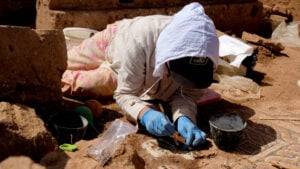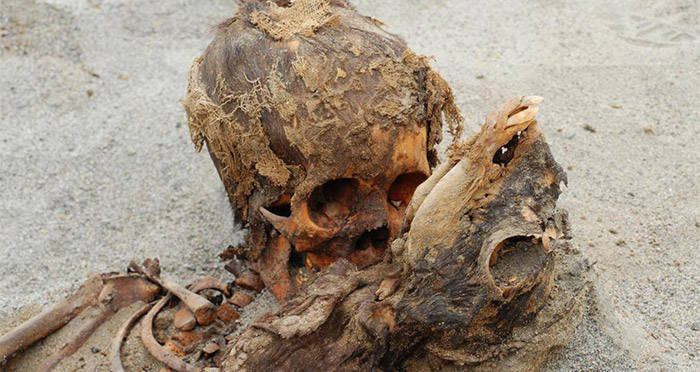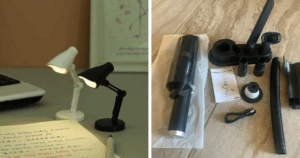“Unearthed Secrets: Mysterious Face Emerges from Ancient Libyan Villa Walls, Revealing a Dark Past”
Indeed, archaeologists can only speculate about what the plaster face means or who molded it. Meanwhile, they also made a number of other exciting discoveries at this ancient home unearthed in Ptolemais.
Other Stunning Discoveries At The House Of Leukaktios
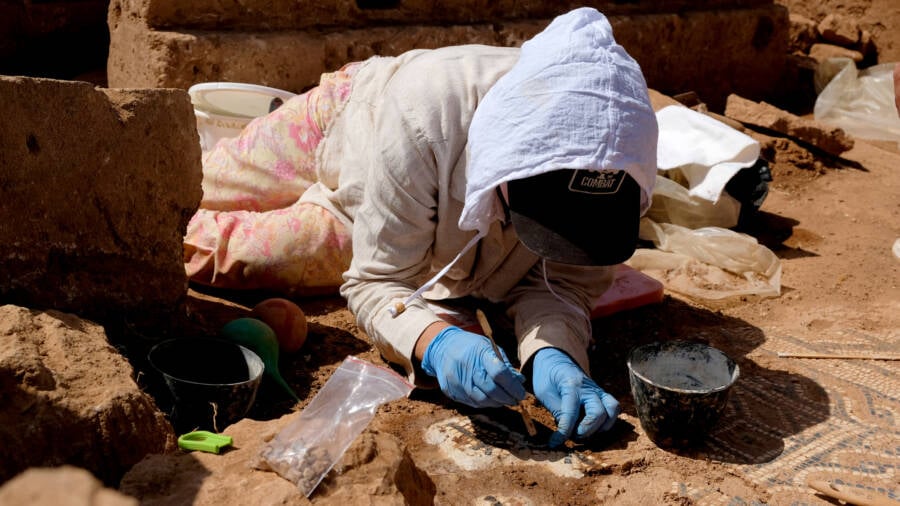
Piotr Jaworski/University of WarsawAn archaeologist working to clean a mosaic, one of the many incredible finds at the ancient house in Ptolemais.
The plaster face mold on the cistern was found at an ancient house — dubbed the “House of Leukaktios” by the archaeological team back in 2001 — which dates back to the second or third century C.E.
During their most recent excavations, the archaeologists explored the “utility” section of the house. They uncovered an inner courtyard (called a peristyle) which extended around a kitchen, a staircase, and a room decorated with mosaics. The archaeologists also examined the house’s water collection system, which employed a pool (called an impluvium) to collect rainwater, which was then drained into two underground cisterns, one of which was decorated with the plaster face.
The archaeologists also determined that the house had been damaged by earthquakes that rattled the region in the second half of the third century. Because of stone containers placed by the door — which were likely used to pay taxes — archaeologists suspect that the house was rebuilt during the Roman period.
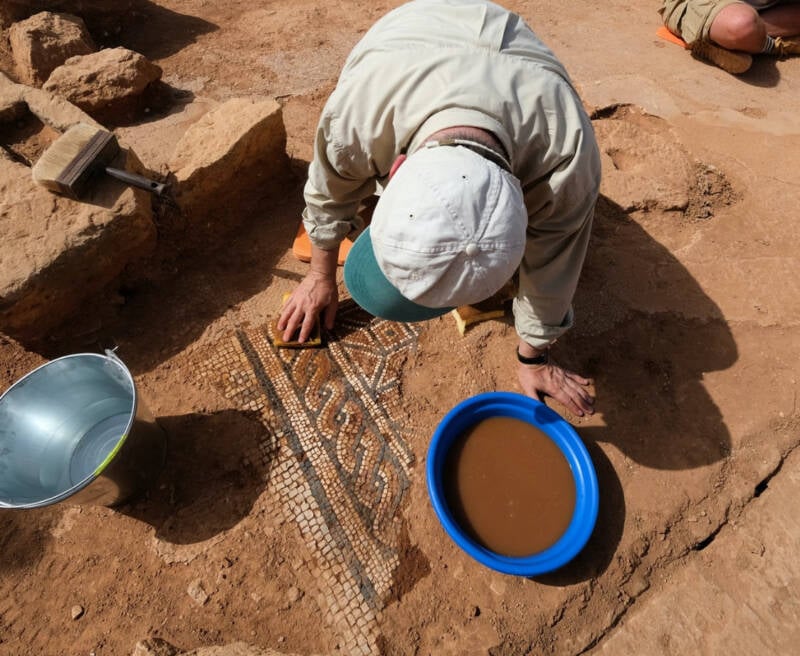
Republic of PolandAn archaeologist works to clean a mosaic near the cistern inlet at the House of Leukaktios, which was damaged by earthquakes in the third century C.E. and later rebuilt.
Indeed, the house is a symbol of Ptolemais’ long and fascinating history. An ancient port city perched on the east African coast, it was founded by Egyptian kings of the Ptolemaic dynasty, who ruled over the region around the fourth or third century B.C.E. During the late Roman period, it also was also briefly the capital of the Libya Superior province. The city endured until the Arab conquest of the seventh century C.E.
